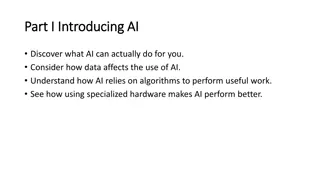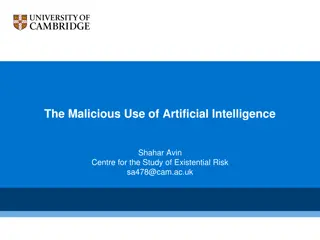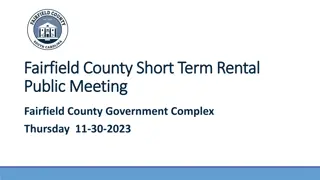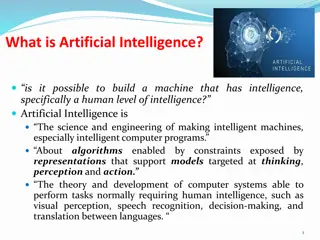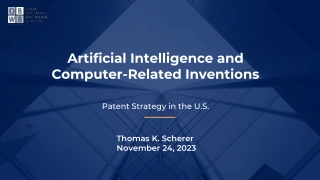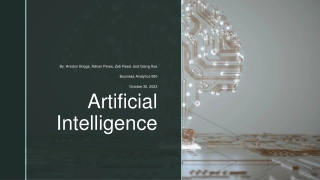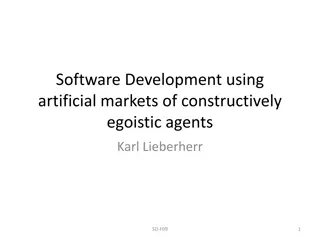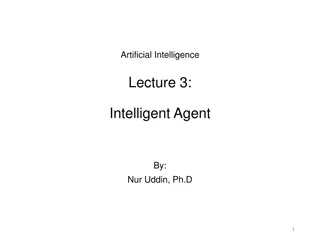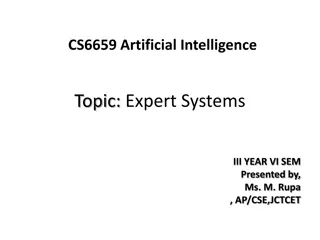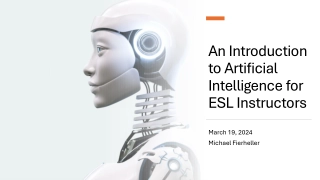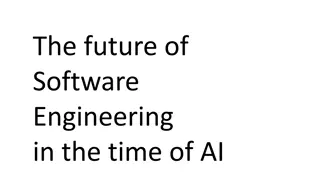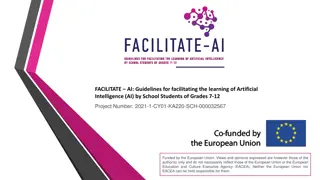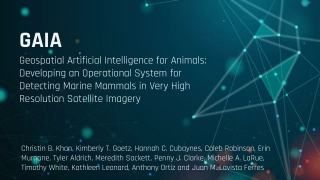Understanding Artificial Intelligence Risks in Short and Long Term
This content delves into the risks associated with artificial intelligence, categorizing them into short-term accident risks and long-term accident risks. Short-term risks include issues like robustness problems and interruptibility, while long-term risks focus on competence and alignment challenges. The text also explores specific scenarios and solutions regarding AI safety and security, shedding light on the complexities and consequences of advancing AI technology.
Download Presentation

Please find below an Image/Link to download the presentation.
The content on the website is provided AS IS for your information and personal use only. It may not be sold, licensed, or shared on other websites without obtaining consent from the author. Download presentation by click this link. If you encounter any issues during the download, it is possible that the publisher has removed the file from their server.
E N D
Presentation Transcript
Artificial Intelligence Risks Shahar Avin Centre for the Study of Existential Risk sa478@cam.ac.uk
Risk Quadrants Accident Risk (AI Safety) Malicious Use Risk (AI Security) Amodei, Olah et al (2016) Concrete Problems in AI Safety Brundage, Avin et al (2018) The Malicious Use of Artificial Intelligence: Forecasting, Prevention and Mitigation Near Term Leike et al (2017) AI Safety Gridwolds Bostrom (2014) Superintelligence Long Term :(
Short Term Accident Risk Specification problems Robustness problems Interruptibility Self-modification Side effects Distributional shift Absent supervisor Adversaries Reward gaming Exploration
Possible scenario Setting: large tech corporation that has both ML development and cloud computing Task: improving task scheduling on distributed compute resources. Solution: Reinforcement learning package developed in-house. Inputs: current loads on the different machines, the incoming tasks queue, and historical data. Output: an assignment of tasks to machines. Reward function: priority-weighted time-to-execute. Performs well in a test environment, rolled-out. A few months later, the system starts to run out of memory. A tech-infrastructure engineer decides to switch the system from a fixed-capacity setting to a load-balanced setting. Feedback loop drives the RL agent to spawn an increasing amount of RL tasks with very high priority.
Learn more Engineering Safe AI seminar group Engineering Department Wednesdays, 5-6.30pm Adri (ag919@cam ) or Beth (beth.m.barnes@gmail.com) https://talks.cam.ac.uk/show/archive/80932 Video YouTube: Robert Miles Concrete Problems in AI Safety Talks@Google, NIPS videos DeepMind, OpenAI, CHAI (publications, internships, jobs)
Long Term Accident Risk Competence, not malice Intelligence as problem solving Tool/Agent distinction Orthogonality thesis Convergent instrumental goals Principal-Agent problem Alignment problem
Near Term Malicious Use Novel attacks Using AI systems On AI systems Scale and diffusion of attacks Automation Access Character of attacks Attribution Distance
Security Domains Digital Security Against humans: automated spear phishing Against systems: automated vulnerability discovery Against AI systems: adversarial examples, data poisoning
Security Domains (contd) Physical Security Using AI: repurposed drones, robots Against AI: adversarial examples
Security Domains (contd) Political Security By governments: profiling, surveillance Against polities: manipulation, fake content
Long Term Malicious Use Risks Race dynamics Power distribution Human prediction and mechanism design Ubiquitous surveillance




